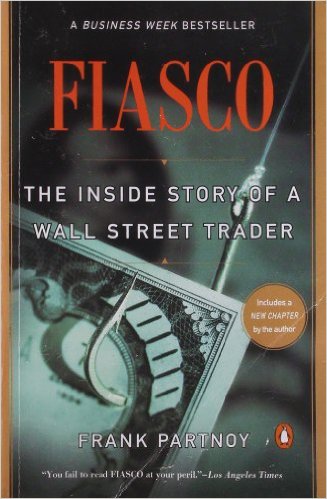The regulators have been clamping down on bankers pay and bonuses since the dark days of the 2008 financial collapse. But can they succeed in curbing their killer instincts?
It’s a good question to pose after reading “FIASCO: The Inside Story of a Wall Street Trader”, a hilarious and sometimes disturbing account of working at Morgan Stanley in the mid-1990s by Frank Partnoy, who later became a Professor of Law and Finance at the University of San Diego. Prior to that, Partnoy worked in the derivatives group at Morgan Stanley helping structure complex deals.
This group manned by so-called ‘rocket scientists’ was extremely profitable. Under the leadership of John Mack it also became home to aggressive ‘macho’ behaviour. When reputable firms like Procter & Gamble, Gibson Greetings and Dell Computer started reporting losses on derivatives, Mack’s instruction to his top team was clear: ”There’s blood in the water. Lets go kill someone”.
Partnoy is a privileged invite to an annual drunken skeet shooting competition called F.I.A.S.C.O., the Fixed Income Annual Sporting Clays Outing. As these young, mostly male derivatives salespeople shoot clay pigeons at the upscale Sandanona club in upstate New York, the testosterone levels are high.
Partnoy explains in some detail how Morgan Stanley created structures circumventing regulations or currency restrictions to acquire the coveted AAA credit rating. There were structured notes that linked the principal to the difference between Thai Baht, a managed currency and a global basket of currencies. An investor might lose everything at maturity. The buyers? State pension funds and insurance companies. Morgan Stanley also structured a Mexican inflation linked bond in U.S. dollars which, instead of getting the Mexican government’s junk bond rating, is rated AA- by S&P. For this transaction Morgan Stanley looked to sunny Bermuda to incorporate the structure. Bermuda was known as a haven for all kinds of dysfunctional financial behaviour and money laundering, first by drug dealers, then by the mafia and last by investment banks!
One of the most famous of these episodes involve Robert Citron of Orange County. Citron borrowed huge sums of money and bought inverse floaters, trigger notes and other structured notes betting on interest rate moves. When interest rates rose in 1994, Orange County reported a US$1.2 billion loss. Other fiascos reported in the book include Barings, Mexico’s currency devaluation, Collaterized Mortgage Obligations and Interest Only Structures. In one transaction, Morgan makes an astounding US$74. million on a US$571.48 million deal sold to Japanese investors. The managers at Morgan debate what to do with this windfall – should they share with the client or remain quiet? In the end they make the most ethical choice and keep it all!
“FIASCO: The Inside Story of a Wall Street Trader” ranks as one of the best books written on finance.


